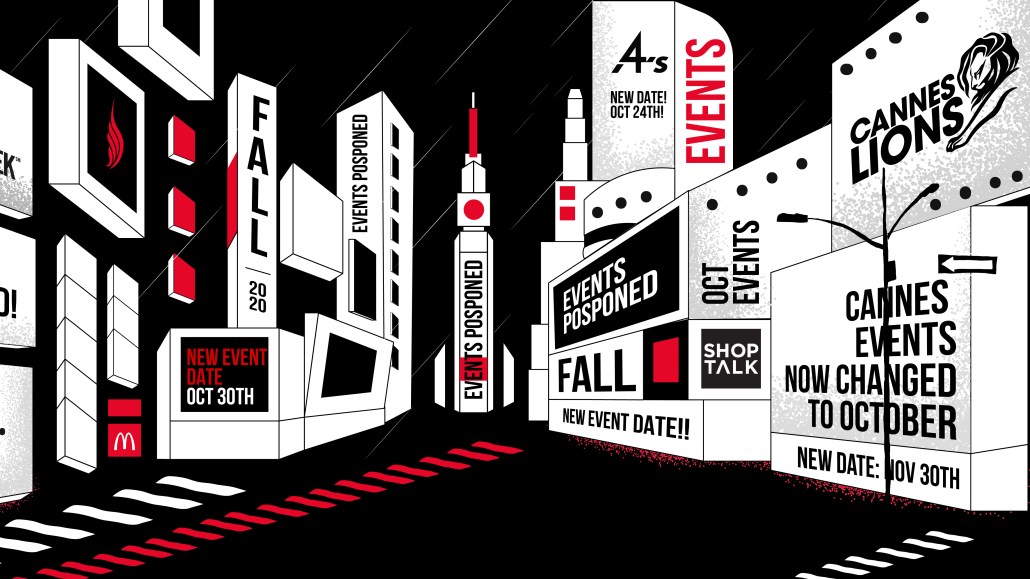Save 50% on a 3-month Digiday+ membership. Ends Dec 5.
Engagement over revenue: How The New York Times has reoriented its events internationally

Facing the new reality that in-person events will be a nonstarter for a very long time, The New York Times is starting to deploy its coronavirus era digital events strategy with a distinctly international focus.
For example, On April 9, two weeks after rescheduling the 20 live events planned for this year, The New York Times international events team based in London launched its first digital event, “The Greenhouse.” The five-part series focused on climate change and was led by New York Times journalists and climate experts, tying in with the 50th anniversary of the first Earth Day on April 22, 1970.
Over the series, 10,000 people tuned in from 65 countries and 16% of those signed up for the Climate Fwd newsletter. Interestingly, The Times saw a spike in international traffic to its climate coverage in general. Also, attendees said through surveys that reporters were no longer faceless bylines but people they would follow and look out for in print, social media and digital events.
“That was exactly what we had aimed to do,” said international events manager Whitney Richardson. “The focus on events in the U.K. is not necessarily revenue right now, it’s about exposing the brand to a new audience. It’s much more a brand awareness and relevance play to show we have people on the ground.”
For the New York Times, expanding reach into international audiences and showing the investment in reporting is key. For certain stories, over 50% of the audience is generated outside the U.S., said the company. It’s 50-person London-based editorial team will be hard-pressed to compete with local news providers, but that’s not necessarily the goal.
“Our readers are those who read English,” said Europe editor Jim Yardley. “We recognize we might not be the first read, but we have a breadth of coverage. One of our roles is to write for an international audience on topics in a way that would appeal wherever you are. Our readership goes well beyond ex-pats.”
Key topic pillars that consistently perform well for its international readers are climate change, gender, geopolitics and culture. These are the focal points for the slim, two-person international events team. Climate change especially is core: For instance, photojournalism exhibition “Carbon’s Casualties” was on show in Hong Kong and The New York Times worked with the gallery to display it digitally. It’s also thinking more about lifestyle and lighter topics, said Richardson. For the last two years, it’s partnered with the Edinburgh Book Festival.
Ad position: web_incontent_pos1
The New York Times’ next digital series, “Netting Zero,” is scheduled for July 9. Journalists will debate with industry experts about action on climate change. The series is in preparation for The New York Times Climate Hub, tied to the United Nations Climate Change Conference in Glasgow, which has been postponed to November 2021.
Lessons from “The Greenhouse” will shape “Netting Zero.” For instance, attendees want speakers to challenge each other in the spirit of debate. The Times learned that hosting a series rather than a one-off digital event gave it more time to market and finesse the production. Tying them to global events like Earth Day also helps give attendees relevant and timely content.
“Digital events is such a saturated market,” said Richardson. “We want the cadence and quality to further deepen engagement in our international audience.”
For now, all digital events are free for people to attend and take place on Zoom. Internally it’s testing other platforms, although she wouldn’t say which, that foster interaction more intuitively. “The Greenhouse” wasn’t sponsored, despite interest from brands, said Richardson, but it’s in conversations with sponsors for “Netting Zero.” And while digital events are lower margin, the revenue generated is also much lower.
The New York Times international events team does, of course, have the advantage of learning from the much larger and established New York team, which set up a cross-departmental digital events task force, created best practice workflows and more nimble three-person production pods.
Ad position: web_incontent_pos2
“The international team has been able to pivot inline with how the New York office is thinking about digital events,” said Richardson. “How do we use this virtual space to allow audiences to have a two-way interaction with journalists in this time of uncertainty.? How do we help people discover new content across The New York Times journalism?”
The New York Times has evidence that events drive traffic. Last June, the publisher ran a week-long run of European-focussed podcast episodes on the rise of nationalist politics from “The Daily.” The podcast host Michael Barbaro attended in-person events ion London with journalists. This led to an increase in the number of users who downloaded five or more episodes, suggesting that they listened to multiple episodes in the series, although it wouldn’t share specific numbers. The international audience also increased, compared with an average week, during the series.
The goal, she added is to continue this cycle for its international audiences. Like other publishers, it’s also working out how events can tie into subscriptions and has a subscriber-only events series on the horizon.
More in Media

Digiday+ Research Subscription Index 2025: Subscription strategies from Bloomberg, The New York Times, Vox and others
Digiday’s third annual Subscription Index examines and measures publishers’ subscription strategies to identify common approaches and key tactics among Bloomberg, The New York Times, Vox and others.

From lawsuits to lobbying: How publishers are fighting AI
We may be closing out 2025, but publishers aren’t retreating from the battle of AI search — some are escalating it, and they expect the fight to stretch deep into 2026.

Media Briefing: Publishers turn to vertical video to compete with creators and grow ad revenue in 2026
Publishers add vertical video feeds to their sites to boost engagement, attract video ad spend and compete with news creators.
Ad position: web_bfu